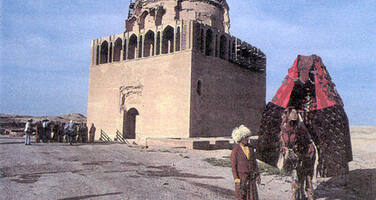State Historical and Cultural Park “Ancient Merv”
Factors affecting the property in 2003*
- Human resources
- Illegal activities
- Management systems/ management plan
International Assistance: requests for the property until 2003
Total amount approved : 98,814 USD
| 2002 | Reinforcement of the capacities of the Department for ... (Approved) | 38,814 USD |
| 2002 | Reinforcement of the capacities of Turkmenistan, to ... (Approved) | 30,000 USD |
| 2000 |
Technical support for the monitoring of principle ...
(Approved)
Reapproval: 23 Mar, 2001 (n°1382 - 4,700 USD)
|
30,000 USD |
Missions to the property until 2003**
Conservation issues presented to the World Heritage Committee in 2003
Illicit excavation at remote sites within the World Heritage protected area of Ancient Merv has been repeatedly noted with concern by Centre staff and UNESCO experts during missions. Since 2001, the Centre has organized, in close co-operation with CRATerre EAG experts, the planning of a systematic monitoring for a selection of monuments at the site with the authorities. This activity has been successfully launched and an on-site training activity in conservation, protection and restoration of earthen architecture aiming to reinforce the capacities of the authorities, has also begun. In addition, several archaeological excavation and conservation work are on-going at the site, such as the International Merv Project (a Turkmen-British archaeological co-operation), a joint Turkmen-Turkish project for the conservation and restoration of the Sultan Sanjar Mausoleum commenced in 2002, annual Russian archaeological excavations at necropolises near Margus and a capacity-building project for the recording, management and conservation of cultural sites within Ancient Merv, funded by the World Monuments Fund.
Summary of the interventions
Decisions adopted by the Committee in 2003
27 COM 7B.55
State Historical and Cultural Park "Ancient Merv" (Turkmenistan)
The World Heritage Committee [34],
1. Expresses its appreciation to the State Party, CRATerre (Centre Régional pour l'architecture en terre) and the World Heritage Centre for their continued co-operation to enhance conservation and management of this large property;
2. Requests the State Party to strengthen the legal protection and management mechanism to safeguard the extensive property, especially to prevent looting of excavated archaeological areas, particularly necropolises, and to enhance communication among the various international teams working on-site, which ideally should be co-ordinated and controlled by the Department for the Protection and Restoration of Monuments within the Ministry of Culture;
3. Requests the State Party to submit a report to the World Heritage Centre by 1 February 2004 on the progress made in enhancing the conservation and management of the property in order that the World Heritage Committee can examine the state of conservation of the property at its 28th session in 2004.
[34] Decision adopted without discussion.
Draft Decision: 27 COM 7 (b) 55
The World Heritage Committee,
1. Expresses its appreciation to the State Party, CRAterre and the Centre for their continued co-operation to enhance conservation and management of this large property,
2. Requests the State Party to strengthen the legal protection and management mechanism to safeguard the extensive property, especially to prevent looting of excavated archaeological areas, particularly necropolises, and to enhance communication among the various international teams working on-site, which ideally should be co-ordinated and controlled by the Department for the Protection and Restoration of Monuments within the Ministry of Culture,
3. Requests the State Party to submit a report, by 1 February 2004, on the progress made in enhancing the conservation and management of the property, for examination by the Committee at its 28th session (2004).
Exports
* :
The threats indicated are listed in alphabetical order; their order does not constitute a classification according to the importance of their impact on the property.
Furthermore, they are presented irrespective of the type of threat faced by the property, i.e. with specific and proven imminent danger (“ascertained danger”) or with threats which could have deleterious effects on the property’s Outstanding Universal Value (“potential danger”).
** : All mission reports are not always available electronically.


